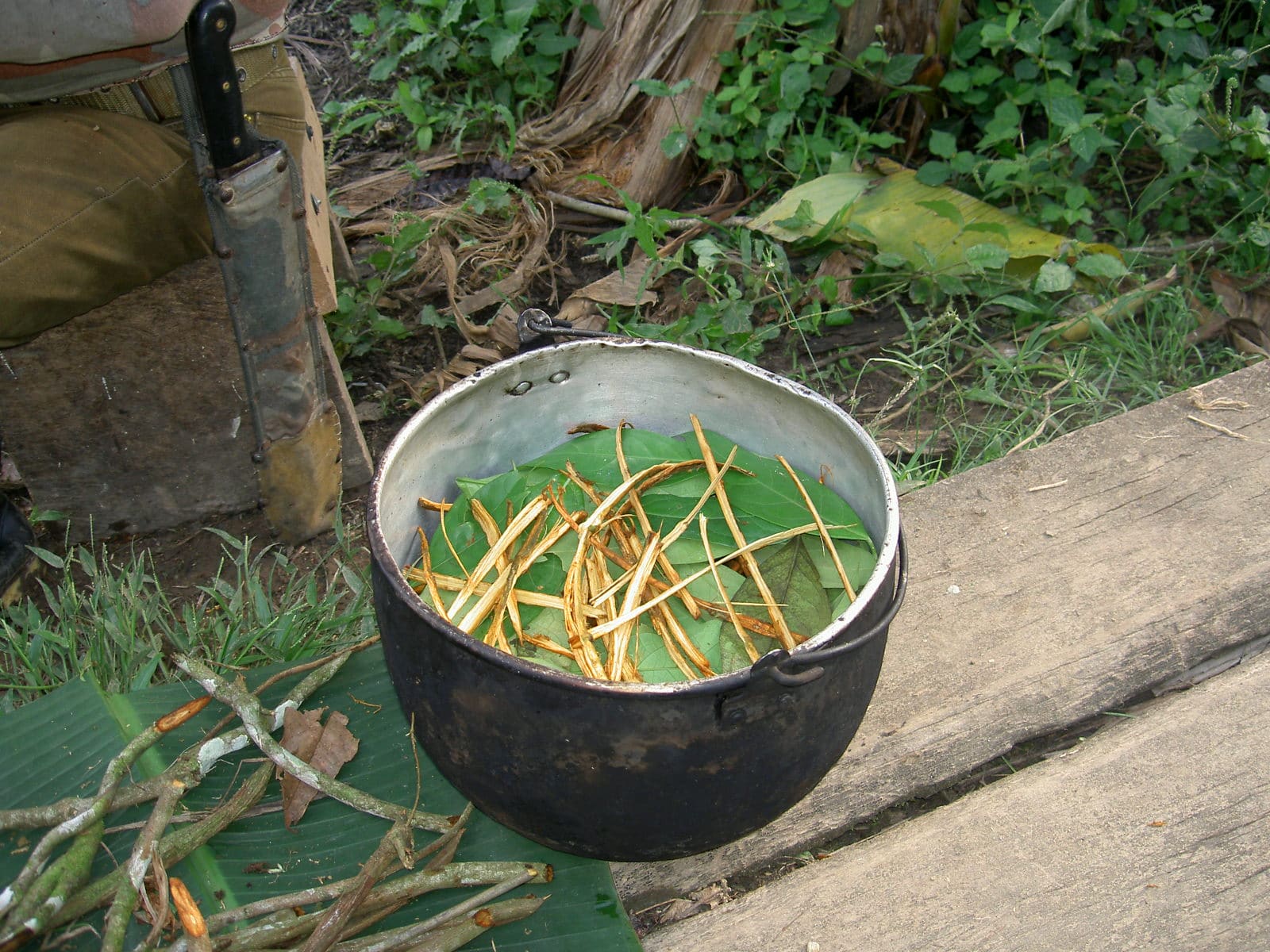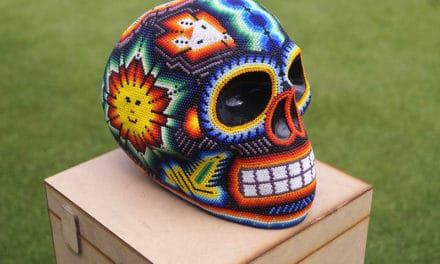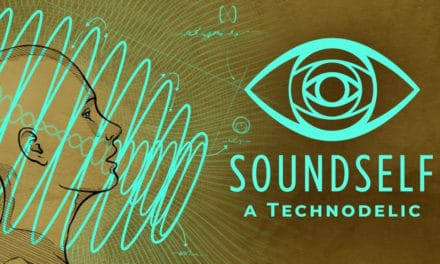
The Way Inn in Huaraz, Peru offers ayahuasca therapy in conjunction with other medicinal plants like tobacco, coca, and San Pedro. | Image Source: The Way Inn
Alex Good is the owner, founder, and head shaman at The Way Inn, an ayahuasca retreat center located in Peru. While Alex has had extensive training with native ayahuasqueros in the region, his center takes a somewhat unique approach by featuring non-native shamans as the ceremonial facilitators. In the first installment of our two-part conversation with Alex, we discussed his introduction to ayahuasca and why he works primarily with non-native shamans. In this second part, he describes the various medicines that he uses in shamanic healing work, including ayahuasca, San Pedro, tobacco, and coca, and the importance of courage when approaching an intense psychedelic healing journey.
At The Way Inn, in addition to your central focus of ceremonies for ayahuasca healing, you also offer San Pedro and coca ceremonies. Can you describe the different roles each of these medicines fills, and how they work together synergistically?
Where to begin? So, if you imagine yourself as fully present at one end of a spectrum, and, [at the other end of the spectrum,] completely oblivious to your body but aware of being somewhere else fully, ayahuasca could be placed at the not-aware-of-yourself-physically end of the spectrum. When she wants to take you, it doesn’t matter if you open your eyes, close your eyes, hide your head under the sheets, or whatever — she’s taking you there and you can’t stay here if you try. Over time and with training, one learns to navigate these spaces hand in hand with her.
Ayahuasca teaches us primarily about our inner world, the management and control of our energies, and how we can navigate to other realms through vibrational alignment with those realms. She teaches us how to clean and manage our energies.
Next down the scale comes Huachuma, or San Pedro. Working with him, it is very rare to be pulled against your will into altered states. Altered states are easy to attain, but generally one has to sit and be with the medicine in a meditative posture in order to be able to enter those states. Also, one has far, far better motor skills on Huachuma than one does on ayahuasca and it is done in the daytime more often than not, so normal operation in the physical environment is easier. Because of this, and because of the heightened sensitivity to energy due to the medicine in your system, one can now become acutely aware of not just one’s own inner energy state, but far more importantly, how that inner energy state relates to, affects, and is affected by other energy bodies in the space around one. Therefore, Huachuma is the ideal tool for later inclusion in a medicine process as the participant learns how to integrate their new awareness into useful daily functioning skills.
Next comes tobacco. This guy is an absolute powerhouse. There are many branches of Amazonian and Andean shamanism; you have ayahuasqueros (people who work with ayahuasca), huachumeros (people who work with Huachuma), curanderos (healers), hueseros (bone setters), vegetalistas (healers who work primarily using plants), paleros (healers who work primarily with the trees), and perfumeros (healers who work primarily with scent). And then you have tobaqueros, who work primarily with tobacco. All of the other branches generally work with many plant species in their practice. Tobacco is so powerful that it has an entire branch to itself. My current maestro is primarily an ayahuasquero, curandero and vegetalista. He is an excellent healer, but both he and another maestro from the same lineage whom we work with are somewhat afraid of tobacco. And quite rightly so. When other medicines aren’t working to dislodge blockages, and provided that no contraindication signs are present, tobacco is your go-to-guy. And when it comes to exorcisms, quite frankly, the only other plant that rivals him is cedar.
With tobacco, one can lose all sense of self, of space, time and location in it, but this is rare and requires significant practice. Far more common is that people feel, after the initial unpleasantness, a great sense of lightness, presence and lucidity in a way that they feel more immediate, aware and alive. Its uses are varied: It is a mild hallucinogen so it can be used for gathering information in expanded ways but is harder to work with in this way than either Ayahuasca or Huachuma.
Coca comes at the end of the spectrum where you’re more fully present here in 3D space and time. The locals in the Andes, where it is primarily used, say that you work with it to discover your future or to see the truth about matters. In local meetings on the hillsides, a bag of coca will often be pulled out and spread out on a ceremonial cloth at the center of the circle. Leaves are prepared by blowing on them, transfusing your intention into the leaves. Then they are passed to members of the circle, one by one, until everybody has passed leaves to, and received leaves from, everybody else in the circle. This practice is used for the opening up of the channels of communication, for which coca is well known, in order that communications may occur in an open, honest and fruitful fashion. If a lot is chewed, and one sits and meditates, one may end up in profound states — however, we primarily work with the coca in situations to facilitate clear communication, such as the group circles that take place the morning after every ceremony.
If someone was interested in an ayahuasca experience but somewhat fearful of the intensity of the journey, what would you say to them?
Courage is not the absence of fear, but the feeling of the fear and bloody well doing it anyway. Then, on the backside of the event, it’s realizing from experience that there was never anything to be afraid of in the first place. The more we approach life with this attitude, the more easily we transcend our limitations as time goes by, yet we have to begin somewhere. Fear is the only true enemy that has to be overcome. In overcoming this, we discover and remember our power.
Growth means moving beyond your comfort zones. This is inherently uncomfortable! There’s bugger all that can be done about that — the only change you can make is the attitude with which you pass through the experience.
I would highly recommend approaching momma Aya with a healthy amount of trepidation as it signifies an attitude of humility and acceptance of the unknown. The ego is predicated upon your trust and belief in its knowingness. Willingly entering into the unknown signifies the start of its demise. It will fight for its life — that’s what it does.
There are only ever two choices we can ever really make in life, two basic, simple choices in any situation, at any time, in any place. This is the choice between acceptance and resistance. When you understand what these choices lead to, it becomes easy. Acceptance is relaxation, expansion, and joy. Resistance, on the other hand, is tension, contraction, and suffering. Once you understand this, whenever experiencing suffering in any way, ask yourself what am I resisting? Where am I resisting it? And simply breathe into that space until things relax. Then make a decision from that place of expansive relaxation. Whatever your mind tells you when in a tense state has a far higher probability of being a load of bollocks.
Thanks for talking with us, Alex!
If you’re interested in ayahuasca therapy or other medicinal plant therapy from The Way Inn, you can learn more on their website.










If you or someone you know has been involved with self appointed Shaman Alex Good that has been abused physically or emotionally please contact a mental health professional or a trauma specialist or call your local abuse hotline.